here an example of
the increase of the dynamic touchweigh mesured
on a key
with pianissimo touch
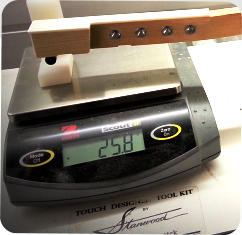
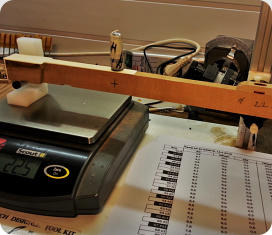

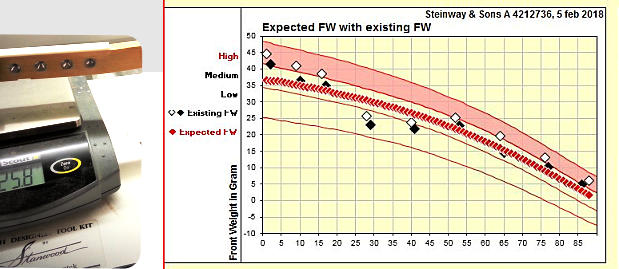



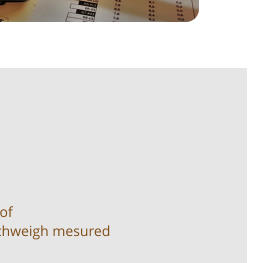


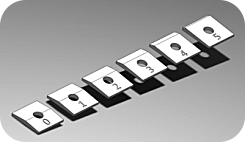

the original hammers are weighted and adapted in a smooth declining weightcurve





















At my workshop in Ternat °2003 with David Stanwood




PTD certificat and logo
Click and watch David Stanwood on You Tube
- Beside all inertia differences
most pianos play with
an uneven dynamic touch because in most factories
the 88 hammers are not corrected into a smooth
decreasing weightcurve.


Total cost for a PTD analyse with the design will be 484,00 EUR
Finishing the PTD will cost 2.662,00 EUR
If a new capstan line is needed a supplement of 605,00 EUR will be charged
I include in this price: - Transport to my workshop and back
- Full regulation of the action with correction of the keydip
- PTD certificate and logo
- Terms of delivery are around three weeks
- Five years warranty on my PTD work

PIANOSERVICE
The PTD touch is great, please visit my workshop and try it out for yourself
PRICE AND PROCEDURE
new PTD keyweight curve


88 hammers

PTD changes the original leadweight in the 88 keys to mirror the weight curve of the 88 hammers
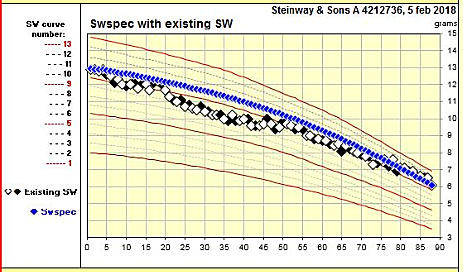

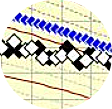



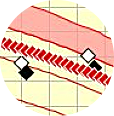


keyleads

new keyweight
calibration
point
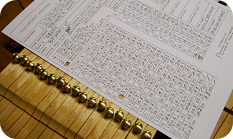
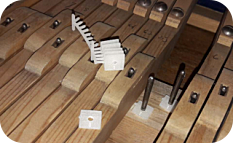

OBW

new
capstanlines
for white and
black keys
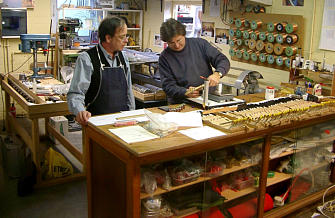
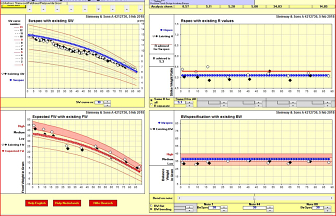
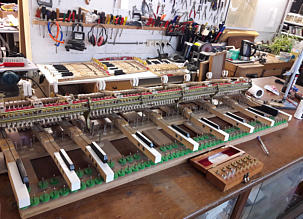


Join the ‘Precision Touch Design Platform’
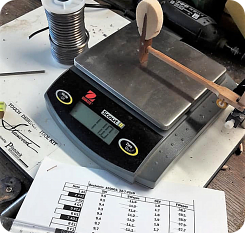


lead in the
hammers
PTD n° 471 analyse with completed design







NEW RATIO
UNIFORM BALANSWEIGHT
I use the Optimized Balancerail Washers ( OBW )
OBW change the pivot point of the keys
and correct small final differences in ratio.
More significant ratio change is done by moving the capstans.
Making a better ratio match with the weight of the 88 hammers:



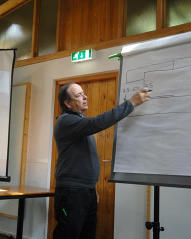


Today everybody can easely acces all PTD information.
I specialy refer to the articles on Davids site and to Mario Igrecs excellent book ‘ Pianos Inside Out’ chapter 9
When the pianist hits the key and catapults the
hammer towards the string, he makes connection
with the amount of inertia in the mechanism.
This resistance of mass he feels increases with the
acceleration of the hammer.
When he plays soft this resistance is small,
just above +/- 50 grf
but, when playing more forté he will need considerably
more force to overcome the increased touchweight.

First the pianist feels in his touch
a brief contact moment of +/- 10 gr friction =
the friction of the parts in the mechanism.
Instantly afterwards he feels the inertia of the
hammer and key in motion.
This inertia can differ considerably from
piano to piano, because piano actions are
produced with various combinations of ratios
and hammer weight.
There is currently no standard.
With PTD we choose the combinations which
will produce an inertia the pianist can
optimally control in his touch.
After a PTD analysis of the transmission a
correction is often necessary.
.

for pianists and technicians
We all keep learning with your comments and questions,
thank you for your important participation.
Thank you for visiting my website !

Within my forty years of pianotuning I played and analysed many different pianos
and could compare the same piano before and after a PTD calibration.
Since 2003 I have been installing more than fifty PrecisionTouchDesigns on
Steinway, Yamaha, Kawai, Bösendorfer, Bechstein, Blüthner, Ibach, Schimmel, Seiler
and other brands.
With this expertise I can easely claim that Precision Touch Design is often
the best solution for upgrading to a more pleasant touch and tone
getting more value out of your piano.
BALANCING THE WEIGHT ON ALL 88 KEYS FOR BETTER TOUCH CONTROL






up to
fforté touch

Danny Boddin
The
first
step
is
analysing
the
action
with
the
PTD
procedure,
this
can
be
done
at
your
home
or
at
my
workshop.
After
analyse
the
PTD
design
will
be created and explained in detail with a chart.
DAVID STANWOOD INVENTED PTD FOR YOU
Piano actions can now be analysed more in dept
in order to know exactly how to be improved.
Precision Touch Design®
is a registered trademark
owned by
Stanwood Piano Innovations Inc.
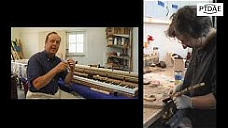
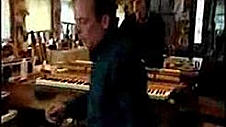


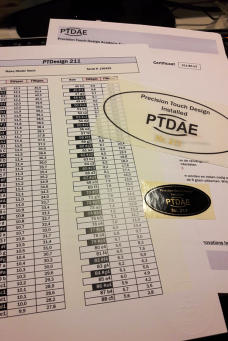
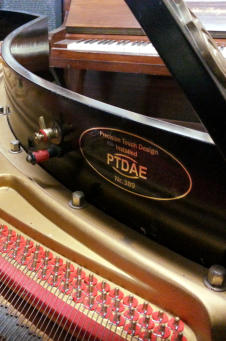
In their training pianists develop techniqual skills to
be able to adapt to different piano touches.
- Some pianos feel too light, they have a low inertia
and are difficult to master,this pianos play with you
and put you way out of control.
- Other pianos have a high inertia,
their hammers are too heavy and
their keys are overloaded with leads.
They react too slow, feel heavy,
are exhausting and are a risk for injuries.

PIANOSERVICE

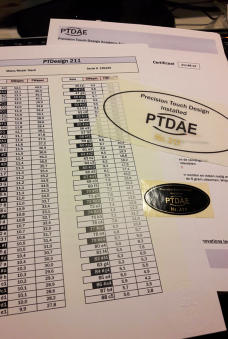

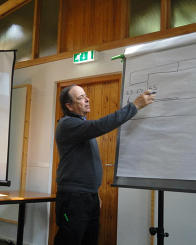




BALANCING THE WEIGHT ON ALL 88 KEYS FOR BETTER TOUCH CONTROL
In their training pianists develop techniqual skills to
be able to adapt to different piano touches.
- Some pianos feel too light, they have a low inertia
and are difficult to master,this pianos play with you
and put you way out of control.








- Other pianos have a high inertia,
their hammers are too heavy and
their keys are overloaded with leads.
They react too slow, feel heavy,
are exhausting and are a risk for injuries.










- Beside all inertia differences
most pianos play with
an uneven dynamic touch because in most factories
the 88 hammers are not corrected into a smooth
decreasing weightcurve.

DAVID STANWOOD INVENTED PTD FOR YOU
Piano actions can now be analysed more in dept
in order to know exactly how to be improved.


HOW DOES PTD EXACTLY CALIBRATE YOUR PIANO ACTION
Aiming for a fast and even touch
with more dynamic range in tone
1. PTD makes a small specific change in the weight
(0.1 - 1.0 g) of the 88 hamers in your piano
2. PTD adapts the weight of the keys
to mirror the new weight of the hammers
3. PTD analyses/ corrects the transmission ratio
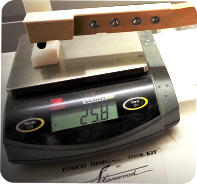
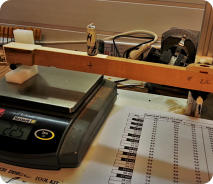
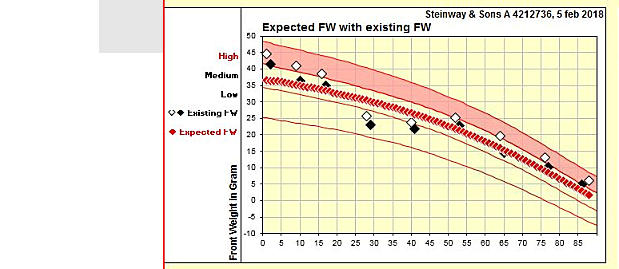
new PTD keyweight curve


88 hammers

to mirror the
weight curve of
the 88 hammers






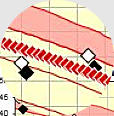


keyleads
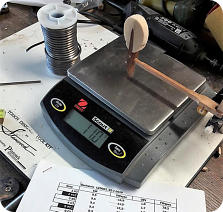


lead in the
hammers


the original hammers
are weighted and adapted in a
smooth declining weightcurve
PTD changes the
original leadweight
in the 88 keys


new keyweight
calibration
point
here an example of
the increase of the dynamic touchweigh mesured
on a key
with pianissimo touch




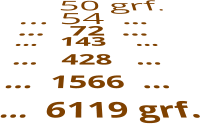

up to
fforté touch

Making a better ratio match with
the weight of the 88 hammers:
When the pianist hits the key and catapults the
hammer towards the string, he makes connection
with the amount of inertia in the mechanism.
This inertia can differ considerably from piano to
piano, because piano actions are produced with
various combinations of ratios and hammer weight.
There is currently no standard.
This resistance of mass he feels increases
with the acceleration of the hammer.
When he plays soft this resistance is small,
just above +/- 50 grf
but, when playing more forté
he will need considerably more force to overcome the
increased touchweight.
First the pianist feels in his touch
a brief contact moment of +/- 10 gr friction =
the friction of the parts in the mechanism.
Instantly afterwards he feels the inertia of the
hammer and key in motion.

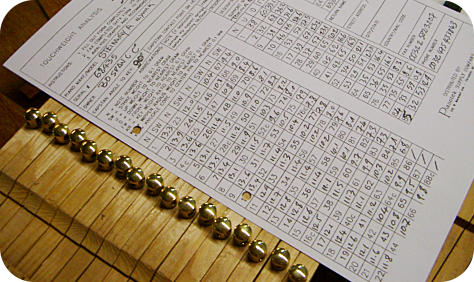


OBW



NEW RATIO
UNIFORM BALANSWEIGHT
The PTD touch is great,
please visit my workshop and try it out for yourself
Within my forty years of pianotuning I played
and analysed many different pianos and could
compare the same piano before and after a PTD calibration.
Since 2003 I have been installing
more than fifty PrecisionTouchDesigns on
Steinway, Yamaha, Kawai, Bösendorfer, Bechstein,
Blüthner, Ibach, Schimmel, Seiler and other brands.
With this expertise I can easely claim that
Precision Touch Design is often
the best solution for upgrading to
a more pleasant touch and tone
getting more value out of your piano.
I use the Optimized Balancerail Washers ( OBW )
OBW change the pivot point of the keys
and correct small final differences in ratio.
More significant ratio change is done by moving the capstans.
At my workshop in Ternat °2003 with David Stanwood

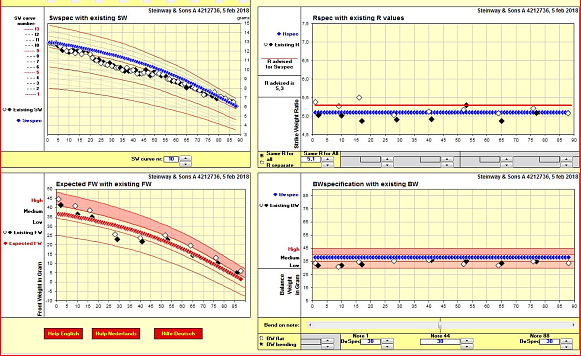
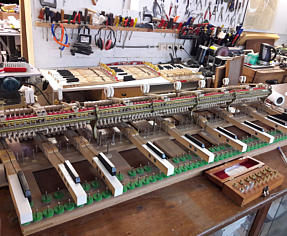
PTD n° 471 analyse with completed design

PRICE AND PROCEDURE
The
first
step
is
analysing
the
action
with
the
PTD
procedure,
this
can
be
done
at
your
home
or
at
my
workshop.
After
analyse
the
PTD
design
will
be
created
and
explained
in
detail
with
a
chart.
Total
cost
for
a
PTD
analyse with the design will be
484,00 EUR
Finishing the PTD will cost
2.662,00 EUR
I
charge
a
supplement
of
605,00
EUR
if
a
new
capstan
line
is
needed.
I
include
in
this
prices
the
transport
to
my
workshop
and
back
and
the
full
regulation
of
the
action
with
keydip
correction.
Terms
of
delivery
are
around
three
weeks.
Five
years
warranty on my PTD work.
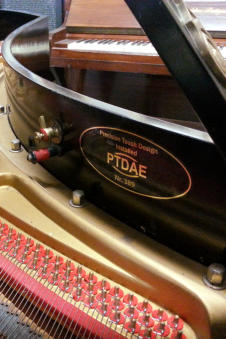


PTD certificat and logo
Click and watch David Stanwood on You Tube


Join the ‘Precision Touch Design Platform’




for pianists and technicians
We all keep learning with your comments and questions,
thank you for your important participation.


Today everybody can easely acces all PTD information.
I specialy refer to the articles on Davids site and to Mario Igrecs excellent book ‘ Pianos Inside Out’ chapter 9

Thank you for visiting !
With PTD we choose the combinations which will produce
an inertia the pianist can optimally control in his touch.
After a PTD analysis of the transmission a correction is
often necessary.
.
+ 32 (0)475 43 38 43
Precision Touch Design®
is a registered trademark
owned by
Stanwood Piano Innovations Inc.
New
capstanlines
for white and
black keys



PIANOSERVICE

PIANOSERVICE
PIANOSERVICE

Danny Boddin


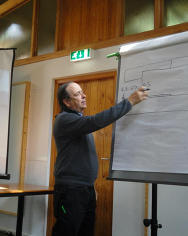


DAVID STANWOOD INVENTED PTD FOR YOU
Piano actions can now be analysed more in dept
in order to know exactly how to be improved.



BALANCING THE WEIGHT ON ALL 88 KEYS FOR BETTER TOUCH CONTROL
In their training pianists develop techniqual skills to
be able to adapt to different piano touches
- Some pianos feel too light, they have a low inertia
and are difficult to master,this pianos play with you
and put you way out of control








- Other pianos have a high inertia,
their hammers are too heavy and
their keys are overloaded with leads.
They react too slow, feel heavy,
are exhausting and are a risk for injuries.











- Beside all inertia differences
most pianos play with
an uneven dynamic touch because in most factories
the 88 hammers are not corrected into a smooth
decreasing weightcurve.
HOW DOES PTD EXACTLY CALIBRATE YOUR PIANO ACTION
Aiming for a fast and even touch
with more dynamic range in tone
1. PTD makes a small specific change in the weight
(0.1 - 1.0 g) of the 88 hamers in your piano
2. PTD adapts the weight of the keys
to mirror the new weight of the hammers
3. PTD analyses/ corrects the transmission ratio


Here an example of
the increase of the dynamic touchweigh mesured
on a key
with pianissimo touch
fforté touch
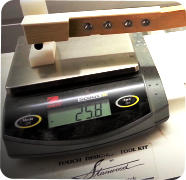
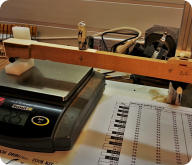
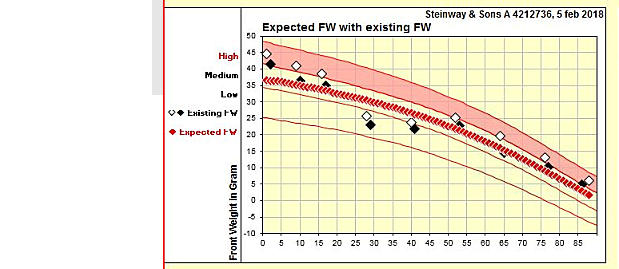






new PTD keyweight curve


88 hammers

to mirror the
weight curve of
the 88 hammers






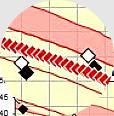


keyleads



lead in the
hammers





Making a better ratio match with
the weight of the 88 hammers:
When the pianist hits the key and catapults the
hammer towards the string, he makes connection
with the amount of inertia in the mechanism.
This inertia can differ considerably from piano to
piano, because piano actions are produced with
various combinations of ratios and hammer weight.
There is currently no standard.


up to
the original hammers
are weighted and adapted in a
smooth declining weightcurve
PTD changes the
original leadweight
in the 88 keys


new keyweight
calibration
point
This resistance of mass he feels increases
with the acceleration of the hammer.
When he plays soft this resistance is small,
just above +/- 50 grf
but, when playing more forté
he will need considerably more force to overcome the
increased touchweight.
First the pianist feels in his touch
a brief contact moment of +/- 10 gr friction =
the friction of the parts in the mechanism.
Instantly afterwards he feels the inertia of the
hammer and key in motion.
With PTD we choose the combinations which will
produce an inertia the pianist can optimally
control in his touch.
After a PTD analysis of the transmission a
correction is often necessary.
.
I use the Optimized Balancerail Washers ( OBW )
OBW change the pivot point of the keys
and correct small final differences in ratio.
More significant ratio change is done by moving the capstans.




OBW

new
capstanlines
for white and
black keys


NEW RATIO
UNIFORM BALANSWEIGHT
The PTD touch is great,
please visit my workshop and try it out for yourself
Within my forty years of pianotuning I played
and analysed many different pianos and could
compare the same piano before and after a PTD calibration.
Since 2003 I have been installing
more than fifty PrecisionTouchDesigns on
Steinway, Yamaha, Kawai, Bösendorfer, Bechstein,
Blüthner, Ibach, Schimmel, Seiler and other brands.
With this expertise I can easely claim that
Precision Touch Design is often
the best solution for upgrading to
a more pleasant touch and tone
getting more value out of your piano.
At my workshop in Ternat °2003 with David Stanwood
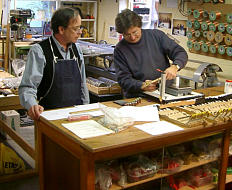
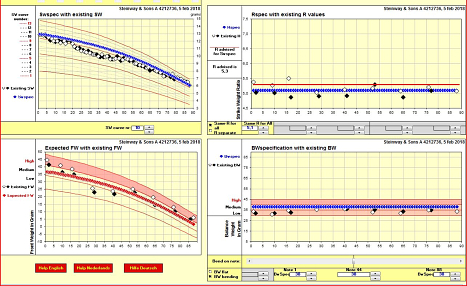
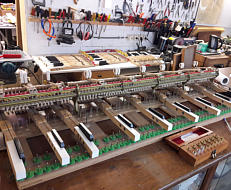
PTD n° 471 analyse with completed design
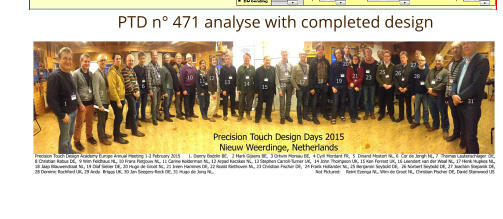
PRICE AND PROCEDURE
PRICE AND PROCEDURE
The
first
step
is
analysing
the
action
with
the
PTD
procedure,
this
can
be
done
at
your
home
or
at
my
workshop.
After
analyse
the
PTD
design
will
be
created
and
explained
in
detail
with
a
chart.
Total
cost
for
a
PTD
analyse with the design will be
484,00 EUR
Finishing the PTD will cost
2.662,00 EUR
I
charge
a
supplement
of
605,00
EUR
if
a
new
capstan
line
is
needed.
I
include
in
this
prices
the
transport
to
my
workshop
and
back
and
the
full
regulation
of
the
action
with
keydip
correction.
Terms
of
delivery
are
around
three
weeks.
Five
years
warranty on my PTD work.


Click and watch David Stanwood on You Tube



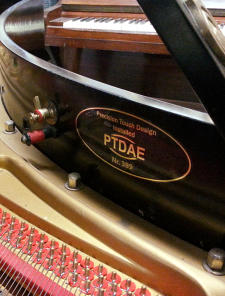
PTD certificat and logo
Join the ‘Precision Touch Design Platform’




for pianists and technicians
We all keep learning with your comments and questions,
thank you for your important participation.


Today everybody can easely acces all PTD information.
I specialy refer to the articles on Davids site and to Mario Igrecs excellent book ‘ Pianos Inside Out’ chapter 9

Thank you for your visit !
+ 32 (0)475 43 38 43
Precision Touch Design®
is a registered trademark
owned by
Stanwood Piano Innovations Inc.
Join the ‘Precision Touch Design Platform’




for pianists and technicians
We all keep learning with your comments and questions,
thank you for your important participation.


Today everybody can easely acces all PTD information.
I specialy refer to the articles on Davids site and to Mario Igrecs excellent book ‘ Pianos Inside Out’ chapter 9

Thank you for your visit !























